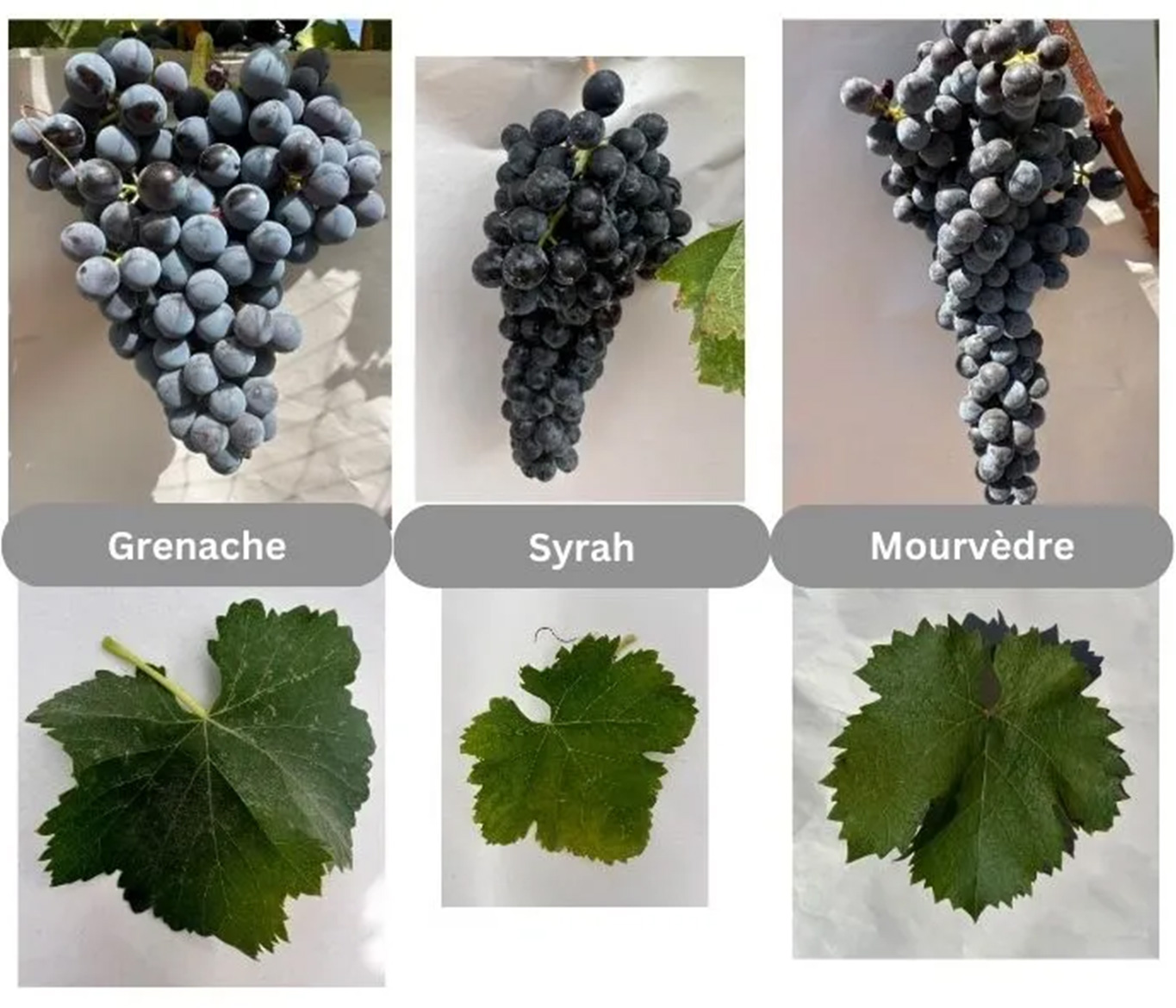What is a “GSM”? Grenache, Syrah & Mourvèdre - a classic blend
Grenache, Syrah, and Mourvèdre are the classic grape varietals in a GSM blend. Many of our friends wonder why these three are commonly put together in winemaking, so we thought we’d share a little bit about all three and how they compliment each other. Each grape varietal brings something different to the mix, even though they share some similarities.
In terms of physical characteristics of the fruit, Grenache clusters tend to be large and round or heart-shaped. Sometimes in certain years or certain vineyards, the clusters can be HUGE, nearly the size of a cantaloupe! Whereas Syrah clusters often are medium-sized and cylindrical. Mourvèdre clusters depend on the clone of Mourvèdre, and how the plants are farmed or the climate…they can range from being small and compact to very long, thin, dangling clusters (like ours). The other interesting thing about different grape varietals, is that not only do the clusters of fruit look different, but the leaves also have significant variations. Some experts (called Ampelographers) can actually tell what a grape species is, just by examining the leaves! Leaves of Grenache are larger-sized and heart-shaped and the edges look like the edge of a serrated knife with three pointy tips, while Syrah leaves are medium-sized and oval-shaped without as pronounced of points. Mourvèdre leaves are medium and rounded in shape and often have three “lobes” or sections.

As for their growing cycles, Grenache is an early-ripening grape that buds in early spring, flowers in late spring, and is typically harvested in late September to early October in our area of California. Where as Syrah is considered to be a mid-season grape; it buds in mid-spring, flowers in late spring, and is usually harvested in mid-to-late-September. Mourvèdre is the latest-ripening grape of them all, and can be found still hanging on the vine in Santa Ynez in mid-to-late October. It gets a later start than the others, with buds forming mid-to-late spring, and flowers in late summer.
When it comes to flavor profiles, Grenache is known for its red fruit flavors, such as raspberry, plum and strawberry, as well as its spicy notes. Syrah tends to be darker and more full-bodied, with dark fruit flavors like blackberry and blueberry, along with savory notes of black pepper and smoked meat. Mourvèdre is often described as having flavors of raspberry and blackberry fruit, leather, and game, as well as an earthy character. Although so far the Mourvèdre from Lyons Vineyard has shown brighter, fresher red fruit like raspberry and a wonderful tea leaf element.
When blended together, these three varietals complement each other beautifully. Grenache adds a softness and sweetness to the blend, while Syrah brings structure and depth. Mourvèdre contributes tannins and herbal characteristics, as well as a distinct earthiness. The resulting GSM blend is a harmonious wine that can pair well with a wide range of foods, including grilled meats, stews, and hearty pasta dishes. (We also love GSMs with a good hamburger!! No need to get fancy to have an amazing pairing.)
Each winemaker tends to use different ratios of the three grapes, depending on the climate the grapes came from, particular vineyard sites' characteristics and resulting grape flavor profiles, acidity, tannins, etc. So each GSM you find may have higher or lower percentages of each grape. And usually winemakers determine what the final blend will be during a stage in the winemaking process called blending trials, where they make small samples in carafes with various options, and taste through to see which is the most balanced in their view, or which fits the profile they’re going for. (Sometimes wineries choose to call it a SGM, SMG or GMS. We haven’t come across one yet that goes with MSG on the label, purely for the confusing salty connotation!)
As a fun treasure hunt, we suggest going to your local wine shop and finding 3 GSMs, all with different percentages of each grape, and taste them side by side. While Grenache, Syrah, and Mourvèdre may have their own unique characteristics, they come together to create a beautifully balanced and complex wine in a GSM blend. Yet every blend is different! When you try them next to each other, you'll be able to identify the nuances and how more of one grape changes the wine's overall profile. Better yet, let us know if you're thinking of taking a trip to wine country and visiting Santa Ynez and we can suggest some great small wineries that make beautiful GSMs for you to visit and taste.
Cheers!
-Sarah & Skye